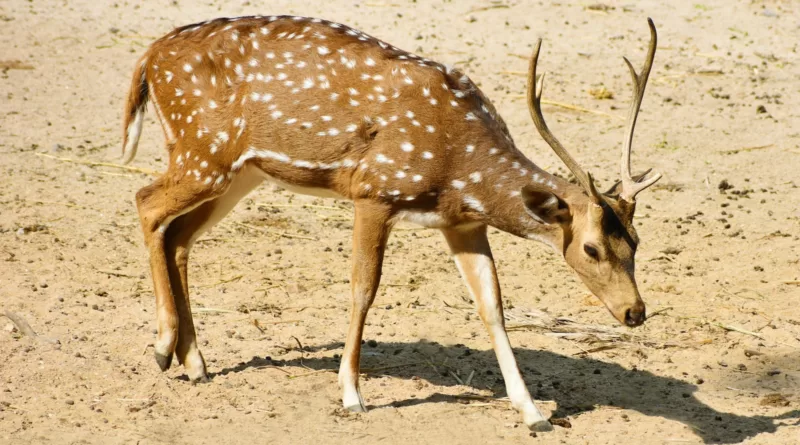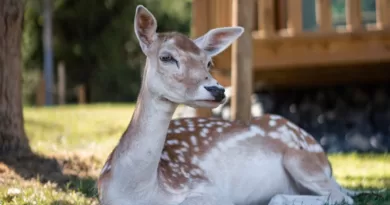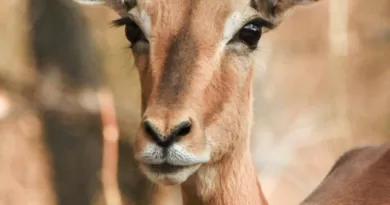Where Do Deer Go When It Rains
Understanding Deer Behavior during Rainy Weather
In rainy weather, deer exhibit noticeable changes in their behavior. One major aspect is their decreased activity levels. Instead of actively foraging or moving about, deer tend to take cover and conserve their energy. This is because the wet conditions make it more challenging for them to locate food and navigate their surroundings. Additionally, the rain produces a dampening effect on their scent, reducing their ability to detect potential threats. As a result, deer often exhibit more cautious and hesitant behavior during rainy periods.
• Deer tend to take cover and conserve their energy during rainy weather.
• The wet conditions make it more challenging for them to locate food and navigate their surroundings.
• The rain produces a dampening effect on their scent, reducing their ability to detect potential threats.
• Deer often exhibit more cautious and hesitant behavior during rainy periods.
The Impact of Rain on Deer Movement Patterns
Deer are fascinating creatures that exhibit interesting behavior during rainy weather. Rain can have a significant impact on their movement patterns, prompting them to alter their usual routines. It is commonly observed that deer tend to become more active just before a rainstorm, possibly due to their ability to sense changes in atmospheric pressure. However, once the rain starts, deer often become more elusive and tend to reduce their overall movement.
When it comes to rainfall, deer prefer to seek cover and find shelter in areas that provide protection from the elements. They are known to take advantage of natural features such as densely vegetated areas, forests, and thick underbrush. These areas not only offer shelter from raindrops but also provide a sense of security as they camouflage the deer from potential predators. Additionally, dense vegetation can act as a natural barrier, shielding the deer from wind and reducing the extent to which they get wet. By utilizing these strategies, deer are able to minimize their exposure to rain and maintain their comfort during inclement weather.
Seeking Shelter: Where Deer Take Cover during Rainstorms
During rainstorms, deer seek shelter in various locations to protect themselves from the elements. One common place where deer take cover is under dense vegetation, such as thickets or brush. These areas provide a natural canopy, shielding the deer from rain and offering some degree of protection. By hunkering down in these vegetation-rich areas, deer can also take advantage of the additional cover to hide from potential predators.
Another option for deer seeking shelter during rainstorms is to find refuge in forests or woodlands. These areas offer greater protection from rain due to their dense canopy cover and tall trees. The leaves and branches act as an umbrella, shielding the deer from the rainfall and reducing the amount of water that reaches them. Additionally, the forest floor may offer drier ground compared to open areas, making it a more comfortable place for deer to wait out the storm.
The Role of Forests in Providing Protection from Rain for Deer
Forests play a crucial role in providing protection for deer during rainy weather. With their dense foliage and intertwined branches, forests act as a natural canopy, shielding these animals from the heaviest rainfalls. The leafy canopies of trees not only intercept the raindrops but also slow down their descent, reducing the intensity of the rainfall that reaches the forest floor. This helps to create a relatively dry and protected environment for deer to seek refuge during inclement weather.
Moreover, the trees in a forest absorb a significant amount of rainfall, further lessening the direct impact of rain on deer. The plants and vegetation within a forest act as a natural sponge, capturing and retaining water in their leaves, branches, and trunks. As a result, the forest floor remains relatively dry, making it an ideal location for deer to bed down and wait out the rain. By taking advantage of the shelter provided by the forest, deer can avoid the discomfort and potential health risks associated with prolonged exposure to rain.
Exploring Deer’s Preference for Dense Vegetation during Rainfall
When faced with rainy weather, deer often seek out dense vegetation for protection and cover. This preference for thick foliage serves multiple purposes for the deer. Firstly, it offers them shelter from the rain, as the dense leaves and branches act as a natural umbrella, preventing direct rainfall from reaching the deer’s body. The vegetation also helps to minimize the amount of water that drips down onto the ground, creating a relatively dry area where the deer can stay. Secondly, the dense vegetation provides camouflage, allowing the deer to blend in with their surroundings and hide from predators or potential threats. By immersing themselves in this leafy environment, deer can maintain a sense of safety and security during inclement weather.
Moreover, the preference for dense vegetation during rainfall can be attributed to the fact that it also serves as a source of food for deer. Many plant species thrive in damp conditions, and the rain stimulates their growth, resulting in an abundance of fresh foliage for the deer to graze on. By foraging within the dense vegetation, deer can access a variety of nutrient-rich plants and leaves, ensuring their dietary needs are met even during rainy periods. Furthermore, the presence of dense vegetation during rainfall provides a means for deer to access water sources as well. The leaves and plants collect rainwater, creating temporary pools or puddles that deer can drink from, alleviating any potential issues of dehydration.
Overall, the preference for dense vegetation during rainfall allows deer to find shelter, remain camouflaged, access food sources, and stay hydrated. This behavior underscores the adaptability and resourcefulness of these majestic creatures in navigating and surviving various weather conditions.
How Deer Utilize Natural Features to Stay Dry in Wet Conditions
To stay dry during wet conditions, deer rely on natural features and their instincts for survival. When rain begins to fall, deer will seek out areas that provide them with the most cover and protection. This often includes dense vegetation, such as thickets and brushy areas, where the leaves and branches create a natural shield against the rain. These locations also offer the added benefit of camouflage, allowing deer to blend in with their surroundings and avoid detection by predators.
Another natural feature that deer utilize to stay dry in wet conditions is the shelter provided by trees and forests. The dense canopy created by the tree leaves acts as a protective barrier, preventing raindrops from reaching the ground underneath. Deer will often seek out these areas, huddling under the cover of trees and taking advantage of the dry space that is provided. In addition to protection from the rain, forests also offer deer the opportunity to find forage and browse on vegetation that may remain relatively untouched by the rain.
The Influence of Temperature on Deer’s Rainy Day Behavior
Deer’s behavior during rainy weather is influenced not only by rain itself but also by the temperature. As temperatures drop, deer may exhibit different behaviors compared to when it is warmer outside.
In colder temperatures, deer’s primary concern is to stay warm and conserve energy. During rainy weather, they may opt to seek shelter in thicker vegetation or under dense tree canopies to protect themselves from the cold and wet conditions. This behavior helps them minimize their exposure to the elements and retain body heat. Additionally, colder temperatures during rain might also reduce deer’s activity levels, as they conserve energy by reducing movement and engaging in less vigorous behaviors. This adjustment in behavior highlights the adaptability of deer in response to changing environmental conditions.
Investigating Deer’s Adaptations for Handling Rainy Weather
Deer, like many other animals, have developed various adaptations to cope with the challenges posed by rainy weather. One of their notable adaptations is their fur. The outer layer of deer fur is composed of long guard hairs that provide a waterproof barrier, preventing the underlying fur and skin from becoming soaked. This ingenious design allows deer to stay relatively dry, even during heavy downpours. Additionally, deer have a special oily substance secreted by their skin, which not only helps to further waterproof their fur but also provides insulation against the cold temperatures that often accompany rainy conditions. These adaptations enable deer to maintain their body temperature and remain relatively comfortable in wet weather.
Another adaptation that deer have developed for handling rainy weather is their ability to seek shelter. During a rainstorm, deer often take cover under the canopy of trees or in densely vegetated areas. This provides them with protection from the rain, as well as from strong winds and potential predators. The dense vegetation provides a natural umbrella for the deer, keeping them relatively dry. Furthermore, the trees and foliage create a microclimate that helps to retain heat and reduce the impact of cold rain on the deer’s body temperature. By utilizing these natural features, deer can effectively escape the elements and minimize their exposure to the hardships of inclement weather.
Observing Deer’s Feeding Habits in Inclement Weather
Deer are fascinating creatures whose feeding habits can vary depending on the weather conditions. When it comes to inclement weather, such as rainstorms, deer’s behavior can be affected, including their feeding patterns. During a rainy day, it is observed that deer tend to reduce their feeding activity. Instead of actively foraging for food, they often seek shelter and conserve energy to endure the unfavorable conditions. This behavior can be attributed to the challenges presented by the rain, such as reduced visibility, slippery terrain, and increased difficulty in finding food sources.
Furthermore, when deer do decide to feed during inclement weather, they show a preference for easily accessible food sources. Rather than spending time and energy searching for food in the open areas, they tend to gravitate towards areas with dense vegetation. Shrubs, bushes, and other vegetation provide not only cover from the rain but also a readily available food source. By selecting food that is close at hand, deer can minimize their exposure to the elements and maximize their chances of finding sustenance during these challenging weather conditions.
The Relationship between Rain and Deer’s Nocturnal Activity
Deer, known for their crepuscular behavior, display interesting responses to rainy weather when it comes to their nocturnal activity patterns. Rainfall tends to have a significant impact on the behavior of deer during the night. As precipitation intensifies, deer tend to become more active during the nighttime hours, seeking cover during the day to avoid the inclement weather. This shift in behavior is believed to be a result of the rain reducing their visibility and making it more difficult for predators to detect them in the darkness. Therefore, these adaptable creatures adjust their routines to maximize their safety and survival during rainy conditions.
Moreover, the relationship between rain and deer’s nocturnal activity can also be influenced by other factors such as temperature and food availability. Lower temperatures and the abundance of food sources can motivate deer to venture out during the night, even in rainy conditions. The rain might offer them an advantage in terms of cover and dampening their scent, making it harder for predators to track them. Additionally, rainwater can provide a source of hydration for deer, allowing them to replenish their water intake during the nighttime hours. These complex interactions between rainfall, temperature, and resources shape the intricate relationship between deer’s nocturnal activity and rain.
How does rain affect deer’s nocturnal activity?
Rain tends to decrease deer’s nocturnal activity as they seek shelter and avoid venturing out in inclement weather.
Where do deer take cover during rainstorms?
Deer often seek shelter in forests or dense vegetation to protect themselves from rain during storms.
How do forests provide protection from rain for deer?
Forests offer natural canopy cover that helps shield deer from rain, providing them with dry areas to take refuge during inclement weather.
Do deer prefer dense vegetation during rainfall?
Yes, deer tend to seek out areas with dense vegetation when it is raining, as it provides additional protection from the rain.
How do deer stay dry in wet conditions?
Deer utilize natural features such as trees, bushes, and rock formations to take cover and stay dry during wet conditions.
Does temperature influence deer’s behavior during rainy days?
Yes, temperature can influence deer’s behavior during rainy days. They may be more active if the temperature is relatively warm, but generally, they still seek shelter to stay dry.
What adaptations do deer have for handling rainy weather?
Deer have developed adaptations such as water-repellent fur and a natural instinct to seek shelter, which help them handle rainy weather more effectively.
How do deer’s feeding habits change in inclement weather?
In inclement weather, deer may alter their feeding habits by seeking food sources closer to their sheltered areas or adjusting their feeding times to avoid heavy rainfall.
Is there a relationship between rain and deer’s nocturnal activity?
Yes, there is a relationship between rain and deer’s nocturnal activity. Deer tend to have decreased activity during rainy nights as they prefer to seek shelter and avoid being in the rain.




